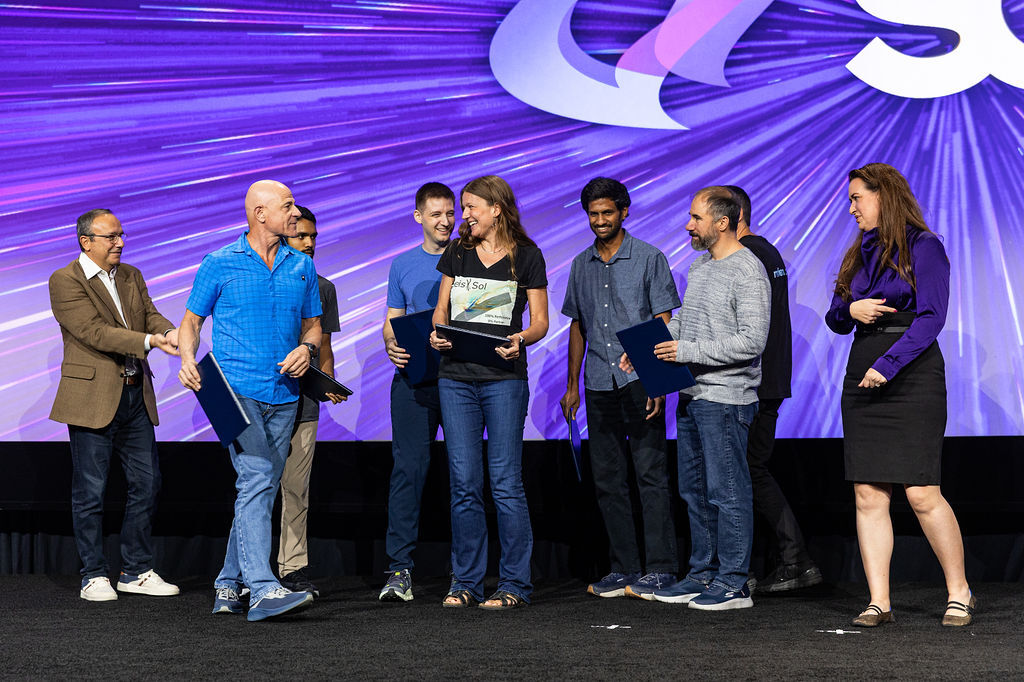
Gordon Bell Prize Awarded for Cascadia Tsunami Forecasting Breakthrough
Announcement
We’re thrilled to share that a team led by Stefan Henneking and Omar Ghattas at UT Austin has been awarded the ACM Gordon Bell Prize for their work on real-time tsunami forecasting in Cascadia. The author team also includes CRESCENT senior personnel Alice-Agnes Gabriel, from UC San Diego, who leads our Dynamic Rupture, Earthquake Cycles, and Tsunamis (DET) working group and showcased this work at our annual meeting in Seattle last month.

About the Gordon Bell Prize
The Gordon Bell Prize, established in 1987 by the Association for Computing Machinery (ACM), is one of the highest distinctions in high-performance computing (HPC). It is awarded annually at the international Supercomputing conference to recognize outstanding achievements that push the frontiers of parallel and high-performance computing, especially in challenging problems in science and engineering.
Previous winners have included teams that used exascale supercomputers to design next-generation laser-driven particle accelerators and to perform mesh-refined plasma simulations for advanced accelerators, as well as groups that developed quantum-scale simulations of heat flow in nanoscale transistors and HPC frameworks to study pandemic-scale virus evolution.
In other words, this is a big deal! This prize typically goes to work that defines what’s possible on the most powerful supercomputers in the world and it is very exciting to see Earth Science applications being recognized in this context.
This Year’s Winning Work: A Digital Twin for Tsunami Early Warning
This year’s winning paper, “Real-Time Bayesian Inference at Extreme Scale: A Digital Twin for Tsunami Early Warning Applied to the Cascadia Subduction Zone,” presents a physics-based “digital twin” of the ocean for tsunami early warning.
Digital twin means a computational replica of a real geophysical system that combines physics-based models with observations in real time to estimate its evolving state and explore plausible futures.
The team combines a fully coupled 3D acoustic-gravity wave model of the ocean with a Bayesian inference framework that ingests seafloor pressure data and, in fractions of a second, estimates seafloor motion and forecasts tsunami heights and timing, including uncertainties, for specific coastal sites.
For a problem of roughly a billion unknown parameters, a straightforward implementation would take decades on a large GPU cluster; by redesigning the algorithms and exploiting parallel structure, the authors reduce the key warning step to about 0.2 seconds on a leadership-class machine.

Designed for Cascadia and Built for Impact
The digital twin is tailored explicitly to the Cascadia Subduction Zone, using realistic topography and bathymetry, dynamic rupture scenarios, and synthetic offshore observations. It shows how advanced numerical modeling, offshore instrumentation, and probabilistic hazard assessment can be brought together in a way that directly serves tsunami early warning and coastal resilience in our region – exactly the kind of shoreline-crossing, societally relevant science that is at the heart of our center’s mission.
Why This Matters for CRESCENT
For CRESCENT, this is a powerful example of how our senior personnel, like Alice in her role leading the DET working group, collaborate with broader national and international efforts in applied mathematics, computational science, and seismology to make Cascadia a true natural laboratory and to put our regional hazards at the very center of global innovation in high-performance computing.
Learn More and Celebrate the Team
If you would like to learn more, the paper is available through ACM. Please join us in congratulating Stefan, Alice, Omar, and the team for putting the geosciences in the limelight by combining fundamental research with technology for societally relevant applications!
